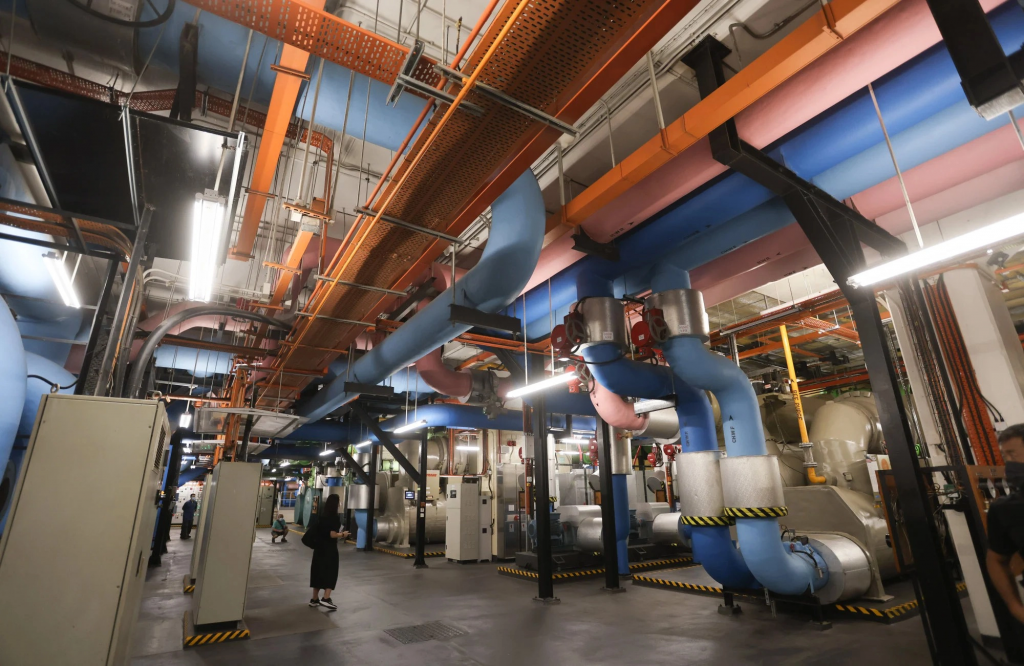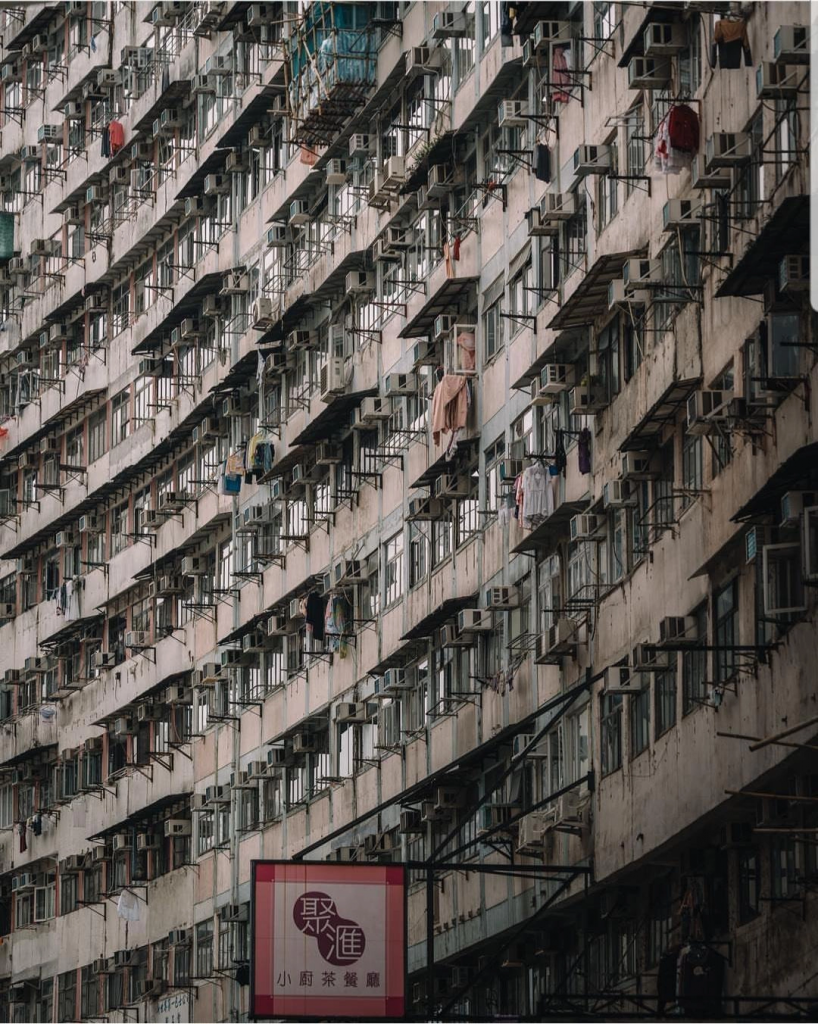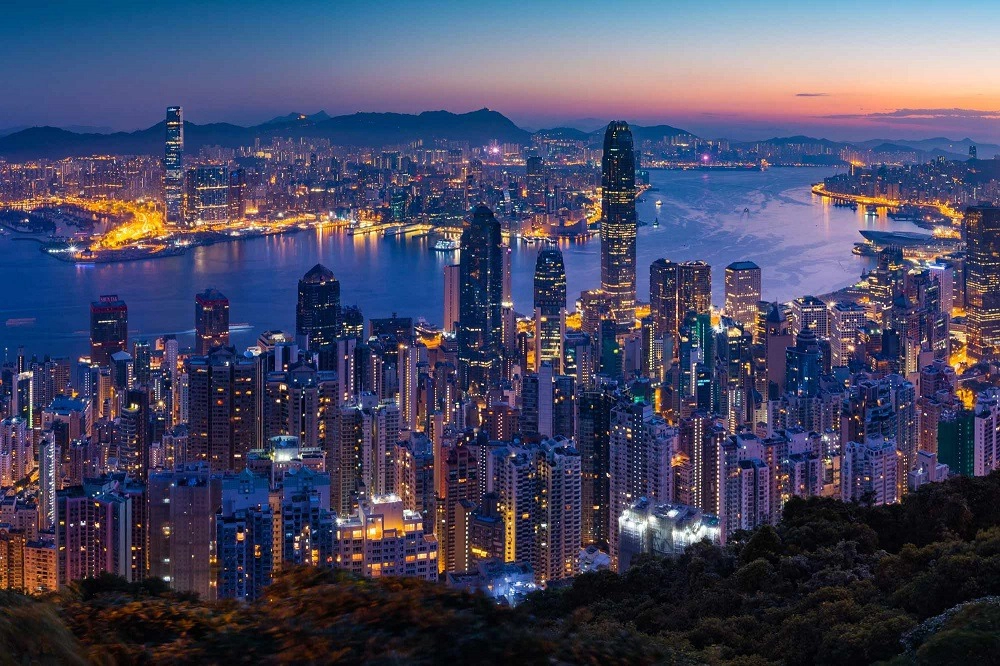Smart sea water-cooling system
Five meters under Exchange Square – the house of Hong Kong’s vital offices, operating a water-cooling system that pumps 26 Olympic-sized swimming pools of seawater daily to cool down the complex building above. The system consumes only 65 per cent energy required for the conventional air conditioning system. Exchange Square’s water-cooling system is only a part of Hongkong Land’s sustainability automized command center. Interestingly, the entire monitoring and management process is located on the top floor of the 52-story Two Exchange Square building, where artificial intelligence, machine learning, Internet of Things (IoT), and other advanced technology process are all concentrated in a 400 square meters room. The developers of this process managed to save 30% energy and reduce carbon emissions by 40% at the end of 2021 compared to the prior cooling system in 2008.

IoT and data analytics in power-metre systems
Green Performance Pledge is an inventive program from a HongKong commercial landlord that aims to reduce “carbon footprint” throughout the office tenancy cycle, from installations to operations. The system helps monitor energy use in different areas and appliances in the office. Exemplary practices include removing underused equipment, detecting surges in the thermostat of air conditioners, replacing LED lights, integrating motion sensors, and installing initiate smart scales under trash cans to collect recycling data. The collected data is then used to fine-tune the building design and electricity usage. After running for seven months, the program records reductions in 14% waste per employee and 51,847kg of carbon dioxide emissions, equivalent to planting 1,250 trees.

Passive Radiative Cooling Paint
The idea comes from a group of Ph.D. students and researchers from the City University of Hong Kong who were inspired by the Saharan silver ant ’s hair structure. They Studied the mechanism of reflecting sunlight and dissipating heat passively in the ant hair structure and then incorporated the technology into a mixture of polymers and nanoparticles to develop iPaint. The cooling iPaint can reflect up to 95% solar radiation and dissipate the building’s heat into space in the form of mid-infrared radiation.

Compared to conventional white paint, iPaint, when painted on buildings’ rooftops, can produce an instant cooling effect around 4 to 7 Celsius. As stated by Martin Zhu, co-founder of I2Cool, by using one square meter of iPaint, constructors could save 120 kWh of electricity and remove 70kg of carbon dioxide emissions annually, the equivalent of planting six trees.
In brief, the three practices above exemplify how developers, landlords, and construction firms can use the latest technologies to address the environmental impact. Practically, tropical countries or countries suffering from annual heat waves may adopt these technologies in developing low-carbon-footprint cooling systems to combat the hot air.
Reference sources:
How smart tech keeps Hong Kong’s concrete jungle cool and green. (2022, September 10). South China Morning Post. https://www.scmp.com/business/article/3191988/ai-cooling-paint-how-smart-tech-helps-hong-kong-buildings-cut-cost-staying
I2Cool | HK Tech 300. (n.d.). Retrieved September 18, 2022, from https://www.cityu.edu.hk/hktech300/start-ups/stories/i2cool
Swire Properties, New World offer solutions for tenants to cut energy, water usage and reduce waste | South China Morning Post. (2022, July, 1). Retrieved September 18, 2022, from https://www.scmp.com/business/article/3183716/why-swire-properties-and-new-worlds-climate-initiatives-are-win-win-office


These innovations are very interesting! How cool can nature be to help us solve in cooling down buildings using paint which is inspired by ants.
Do you think these innovations alone will contribute enough to fight the heat problem? Or how big of an impact do you expect them to have?
These innovations are just some of the advanced technology applications that help cool down the heat. From my point of view, they are feasible to fight the heat problem alone. But there could be more advanced, more sustainable innovations. Moreover, different countries presents different demographic and geographic characteristic right? So adopting those better, more suitable applications or using different applications collectively is a wiser choice, I believe.
Fascinating how Hong Kong uses a resource that is abundant (i.e. sea water) and combines it with digital tools to tackle the problem of sustainable indoor climate control! However, I wonder whether its possible to scale up such technologies without creating an adverse effect on surrounding ecosystems.
Im afraid I do not have enough knowledge to answer your question. But as technology develops quickly, in the future, we are reasonable to expect the possibilities to scale up such innovations with little effect on the ecosystems 😉